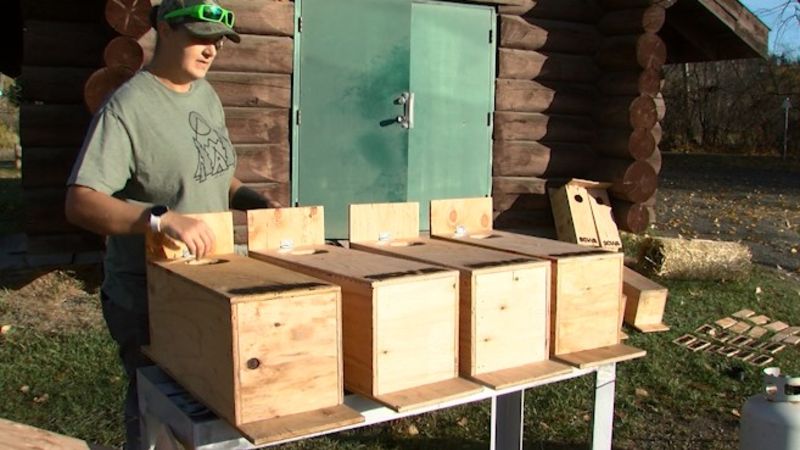
SCWA has a new housing project
PRINCE GEORGE – Jesi Lauzon and a host of volunteers have been busy lately building duck nesting boxes like this one and hen houses and a project called Help Us Help Ducks.
“So this is our pilot. This is our first year. So we started putting up sign-up sheets on our tables throughout the year. Anywhere that we’ve had a table, we’ve had a sign up sheet as well of reaching out to people on our social media.”
